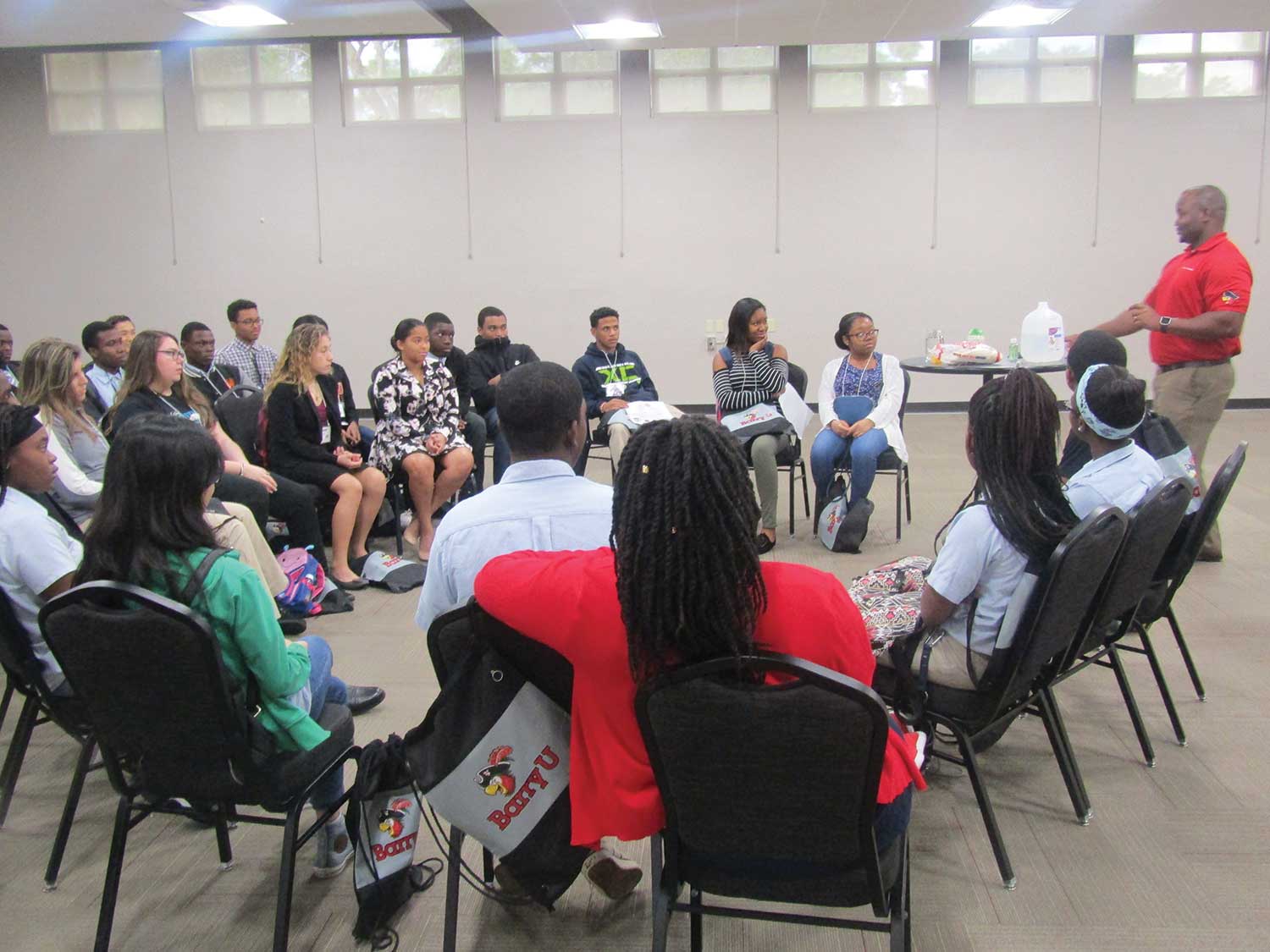Universities in Miami compete to grow enrollments

Responding to a national decline in high school graduates, universities in Miami are competing to maintain – and even grow – their application and enrollment numbers.
“We’re simply… producing fewer graduates, and that has a significant implication on our institutions, as well as on our employers and our workforce,” said Joe Garcia, president of the Western Interstate Commission for Higher Education, an organization that provides data and policy analysis, in a statement.
At Nova Southeastern University, the admissions department is tracking high school graduation trends and targeting areas that are the most promising.
“With fewer students graduating from high schools nationwide, we’re all vying for them,” said Deanna Voss, dean of undergraduate admissions at Nova. “There is growth in the Southwest and Southeast, but decline in some areas in the Northeast and Midwest, so we have been careful not to target our efforts at a region with diminishing returns.”
Despite trends, Nova had an “incredibly stellar year during a time when many universities are not meeting their enrollment targets,” Ms. Voss said.
Nova has a strategic plan, Vision 2020, to enroll 2,020 students in the fall of 2020. Each year, Nova is to gradually increase its admissions target until it meets the goal.
“We had hoped for 850 incoming freshmen this fall and are on track to be overenrolled with 970,” Ms. Voss said.
“We have plans to continue to grow to make sure we have enough faculty and staff to elevate the student experience. We are planning on building new residence halls,” she said.
“We’re going out and promoting NSU both locally and worldwide. We have three members on our staff dedicated to international recruitment. Last year we had 35 international students, and this fall we’re on track to double that number,” she said.
Even with the spike in enrollment for the fall, universities are not counting their chickens just yet, as enrollment rates melt leading up to the academic year.
“We are in high gear with our melt prevention strategies,” said Roxanna Cruz, associate vice president of recruitment and admissions at Barry University. “We check who has yet to register for classes, pay housing deposits and complete forms. Our counselors are always following up, because you never know who the influencer might be that will connect with these students and keep them with us.”
“Last year we had a melt rate of 17% and the previous year was even higher,” Ms. Cruz said. “This year we are shooting for about 10% and are already at 8%, so we’re hoping that number doesn’t creep up and we can maintain about 850 incoming students,” she said.
While Barry is worried about enrollment numbers melting over the summer, it has seen “a dramatic increase in the application pool, and a higher completed application rate,” Ms. Cruz said.
Dramatic shifts in enrollment trends have driven Barry to revamp old strategies to attract students who are the best fit for the community.
“We’ve really taken a step back to rethink our internal processes; now the recruiting process is more business driven. We looked at our application pool and have worked smarter to capture students that will be interested in Barry. We’ve expanded our reach, restructured the office and put counselors through training to be more engaging,” she said. “Even our deans are involved in the recruitment process.”
Integral to the new recruitment strategy is a more concentrated effort by Barry to attract locals: “We don’t want to take for granted that they will come, so we’re hitting the pavement,” Ms. Cruz said. “We’re doing a lot more private visits, busing in local high school students and hosting leadership seminars.”
While some schools are looking to increase application numbers, the University of Miami’s primary focus is making sure that accepted students choose UM.
“Over the past decade, applications have increased from 16,000 to 33,000. Our challenge now isn’t getting students to apply, but getting students to accept our acceptance offers,” said John Haller, vice president of enrollment management.
When asked if UM is looking to increase enrollment numbers, Mr. Haller said the university is comfortable with the 2,000 to 2,025 freshmen it generally enrolls.
“However, we are looking to enroll a greater number of honor students from Miami-Dade and create better financial options for those students,” he said.
In an effort to secure more ‘change-makers’ on the campus, UM amped up its financial scholarships.
“We want to make sure there are no socio-economic barriers to students attending, so we have an initiative to meet 100% of a student’s demonstrated financial means through merit or need-based scholarships,” Mr. Haller said.
The university’s commitment to diversity extends past economic diversity; “We lead our national peer group in the percentage of black students,” he said.
UM’s undergraduate admissions team spends three months each year recruiting nationally and internationally, with an emphasis on South Florida, to create a demographically diverse pool, Mr. Haller said.
This push for diversity is not exclusive to UM, as most universities in Miami take pride in their diverse student bodies and hope that it will help in the coming years as enrollment numbers decrease nationwide.
“Diversity is our strong suit,” said Burcu Ayrim, director of marketing at St. Thomas.
St. Thomas’ undergraduate population is 42.9% Hispanic, 28.2% black and 11.1% white.
St. Thomas relies primarily on word of mouth to increase application numbers, Ms. Ayrim said.
Application numbers this spring went up 26.2% from last spring; summer numbers are up 31.4%; and fall is projected to increase by 26.1%.
While Miami universities are swimming against the current to drive up enrollment and application numbers, they’re optimistic about the outcome.
“We’re excited for what’s to come,” Barry’s Ms. Cruz said. “We’re having a lot of fun and working hard to continue on this positive trend. When people come together to make a community better, great things can be done.”







Recent Comments